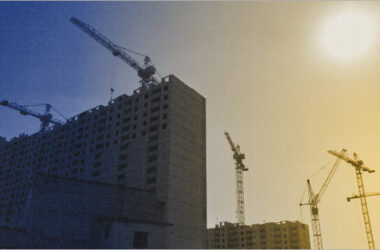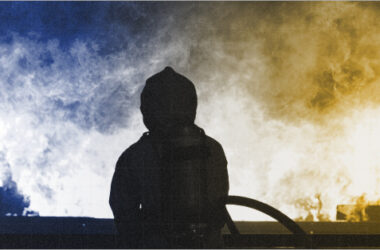Factories are the very backbone of industrial development as they drive economies through sustained production. However, they too are susceptible to one of the most devastating perils: fire. From electrical short circuits to chemical reactions, just one incident can lead to a permanent destruction of property, machinery and stock. That is the reason why Fire Insurance for factory is not only a financial product- it is a protective belt designed for manufacturers.
There is, however, a catch to this: the price of this shield, called the ‘premium’, is not fixed. It varies in line with various risk-based factors. Knowing the factors that affect insurance premiums allows the owners of the factories to make sound decisions, better manage risks and in some cases even save money without compromising on the available protection.
Let’s now take a closer look at the factors which influence factory fire insurance premiums.
Understanding Fire Insurance for Factories
Fundamentally, Fire Insurance safeguards companies against losses due to fire and other associated hazards like lightning, explosion, implosion or even the damage incurred in the course of fighting fire. Generally, the policy has a wide scope in factories and this includes:
- The building structure
- Production machinery and equipment.
- Raw materials and finished goods stored on-site
- Furniture, fixtures, and stock-in-trade
In contrast to regular property insurance, factory fire insurance may frequently require customisation since every industry is associated with different types of fire risks. A textile mill, say, has a set of hazards that are quite different from those of a chemical plant. This tailoring, and the nature of the factory, is what fuels the premium calculation.
Key Factors Influencing Fire Insurance Premiums
1. Nature of Industry and Goods Manufactured
The first question Fire Insurance providers often ask is: What does this factory produce?
- Industries dealing with flammable materials like chemicals, plastics, paints, or petroleum products naturally carry higher fire risk.
- Factories producing textiles, paper, or wood-based products also fall under higher-risk categories because of the combustibility of raw materials.
- On the other hand, industries dealing with non-flammable goods such as metals, ceramics, or glass are considered relatively safer, resulting in lower insurance premiums.
This risk categorisation is fundamental because Fire Insurance providers use it to determine the probability of a fire-related claim.
2. Location of the Factory
The location of a factory has a rather unexpected influence on Fire Insurance premiums.
- The insurance premiums on a unit in a highly populated industrial cluster may be higher because of the “contagion risk”–spreading of fire among neighbouring factories.
- The closer the fire stations, hydrants, and water sources are, the lower the insurance policy premium because the quick response minimizes the possible damage.
- Factories in the disaster prone areas (as the ones in high lightning-hit zones or flood-prone areas) tend to be charged high insurance premiums since the insurers view them as ‘double exposures’.
In essence, Fire Insurance providers consider the speed with which assistance is provided as well as the issue of the environment itself contributing to fire risk.
3. Construction and Infrastructure of the Building
One of the most practical determinants of Fire Insurance for factory premium is the structure of the factory building.
- Plants constructed using fire-resistant materials such as reinforced concrete or steel frames are less prone to fire than those constructed using wood.
- The age of the building is also a factor in computation of Fire Insurance premium. Constructions that are older and have outdated wiring or are in poor condition are regarded as risky.
- Other features that insurers examine include fire resistant walls, emergency exits, and ventilation systems that are able to contain and reduce the amount of damage caused by fire.
Improved infrastructure translates to reduced fire insurance premiums for factories- an obvious reason why factories should invest in good construction.
4. Safety and Fire Prevention Measures
Fire Insurance premiums are closely tied to how seriously a factory treats safety.
- Well-equipped facilities with fire alarms, sprinkler systems, extinguishers, and hydrants usually enjoy lower insurance premiums.
- Staff training also matters. A workforce trained in fire drills and emergency response protocols reduces the likelihood of severe incidents.
- Preventive maintenance of electrical systems and machinery is another positive factor that insurance coverage providers look for.
This is one area where factory owners have the most control: better preparedness directly translates into saving of Fire Insurance for factory premium.
5. Value of Assets Insured
Insurance premiums are also linked to the sum insured—the total value of the property, plant, machinery, and stock declared in the insurance policy.
- The higher the declared value, the higher the Fire Insurance for factory premium.
- Undervaluing assets may lower factory Fire Insurance premiums in the short term, but it can lead to underinsurance, where compensation is insufficient during a claim.
- Stock valuation is particularly important in industries with fluctuating raw material or finished goods inventory.
This is why accurate valuation and transparent disclosure are critical when purchasing a Fire Insurance Policy .
6. Claim History of the Factory
Insurers keep a close eye on past claim records.
- A factory with multiple fire-related claims in recent years is seen as riskier, and its insurance premiums may rise sharply.
- Conversely, a clean claims history not only reduces Fire Insurance for factory premiums but also builds trust with insurers, sometimes even qualifying the factory for loyalty benefits.
Think of it like a credit score: your history influences how much confidence fire insurance providers place in your operations.
7. Duration and Type of Policy Chosen
Cost or premium is influenced also by the structure of the Fire Insurance Policy itself.
- The most popular ones are Annual Fire Insurance policies, although there are long-term policies that some insurers provide, with possible premium discounts.
- Add-on covers, including loss of profit insurance (to cover business interruption), earthquake cover or terrorism cover can raise the cost of factory fire insurance. However, they can offer wider insurance coverage.
The decision comes down to the trade off between cost and a holistic coverage against risks.
8. Compliance with Regulatory Standards
Factories are regulated with regard to safety standards and industry regulations. During their risk assessment procedures, insurers usually conduct compliance checks.
- Competitive factory fire insurance premiums will be awarded to a factory that meets statutory fire safety standards, holds fire safety certificates, and is audited on a regular basis.
- Failure to comply, however, not only increases factory fire insurance premiums, but it can also compromise the settlement of claims.
In this case, compliance is not only about box-ticking but has a direct effect on insurability and financial security.
How Insurers Assess Fire Risks in Factories
Insurers undertake a thorough risk assessment before settling on a Fire Insurance Policy premium. Surveyors can come to the factory and assess:
- Construction type and layout
- Fire safety measures in place
- Storage of raw materials and finished goods
- Electrical installations and maintenance records
- Historical fire incidents in the area
This inspection contributes to the underwriting process where the insurers estimate the cost of Fire Insurance for factories. The more transparent or ready a factory is to this assessment, the easier will be the process and the more competitive will be the Fire Insurance premium.
Tips for Factory Owners to Reduce Fire Insurance Premiums
While many factors are beyond control (like location or industry type), factory owners can adopt strategies to keep factory fire insurance premiums manageable:
- Invest in Fire Safety Systems: Install modern alarms, sprinklers, hydrants, and smoke detectors. Regularly test and maintain them.
- Train Your Workforce: Conduct fire drills, train staff in emergency procedures, and appoint fire marshals.
- Regular Maintenance: Keep electrical wiring, heavy machinery, and heating equipment in top condition through scheduled maintenance.
- Improve Building Standards: Renovate older structures with fire-resistant materials and ensure proper ventilation.
- Accurate Valuation: Always declare the correct value of assets to avoid underinsurance penalties.
- Maintain a Clean Record: Reduce risks through preventive measures to avoid frequent claims, thereby earning lower Fire Insurance premiums in the long run.
Final Thoughts:
Factories are high-risk settings by nature, in which fire hazards are constantly present. Although Fire Insurance provides the necessary coverage, the premium is not purely arbitrary given the amount of risk involved in each unit. The cost is greatly influenced by factors such as the type of industry, the location, the quality of the construction, safety, and the history of claims.
To owners of factories, the message is simple; Fire Insurance premiums can be managed, but only by taking proactive measures on risks. Investing in fire-resistant infrastructure, setting up modern safety systems, employee training and regulation compliance not only enhances safety, but also reduces the financial cost of premiums.
Finally, Fire Insurance is not only about compliance with the laws or the requirements of lenders. It is all about protecting the backbone of a business. With a well-considered Fire Insurance Policy, supported by sound safety measures, factories should be able to maintain the production lines in operation, without the danger of fire becoming a financial catastrophe.







